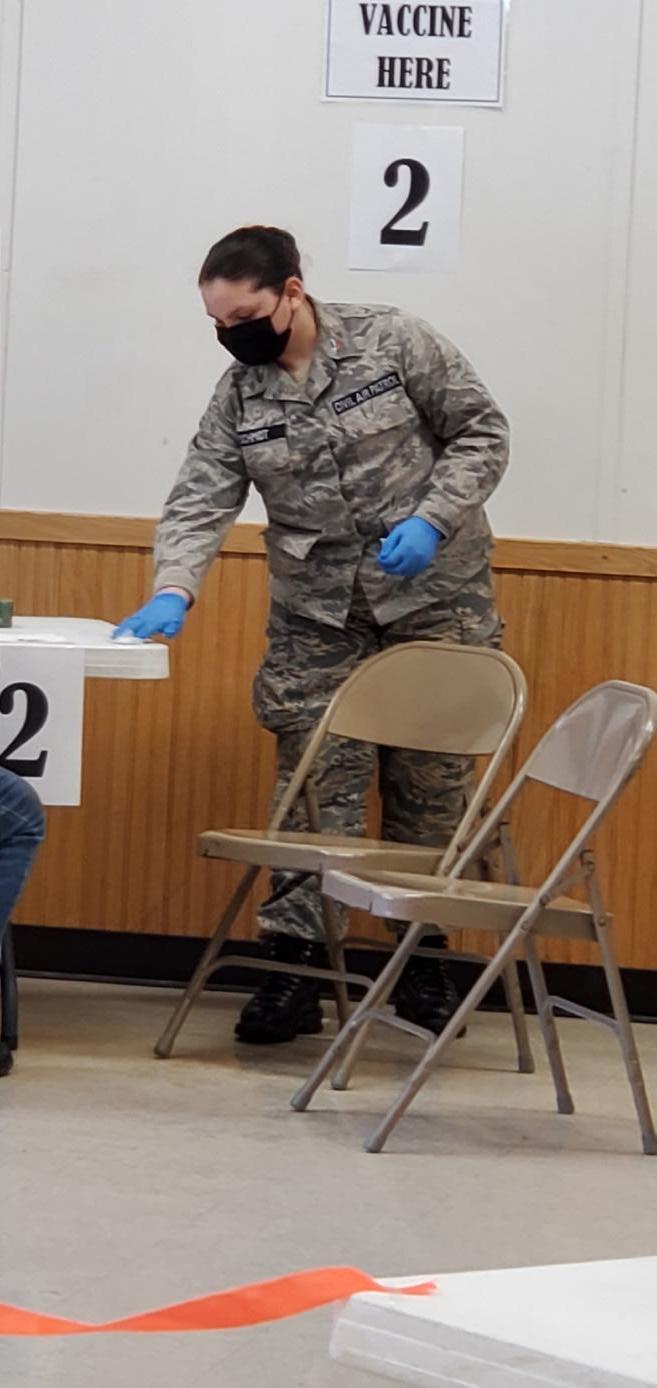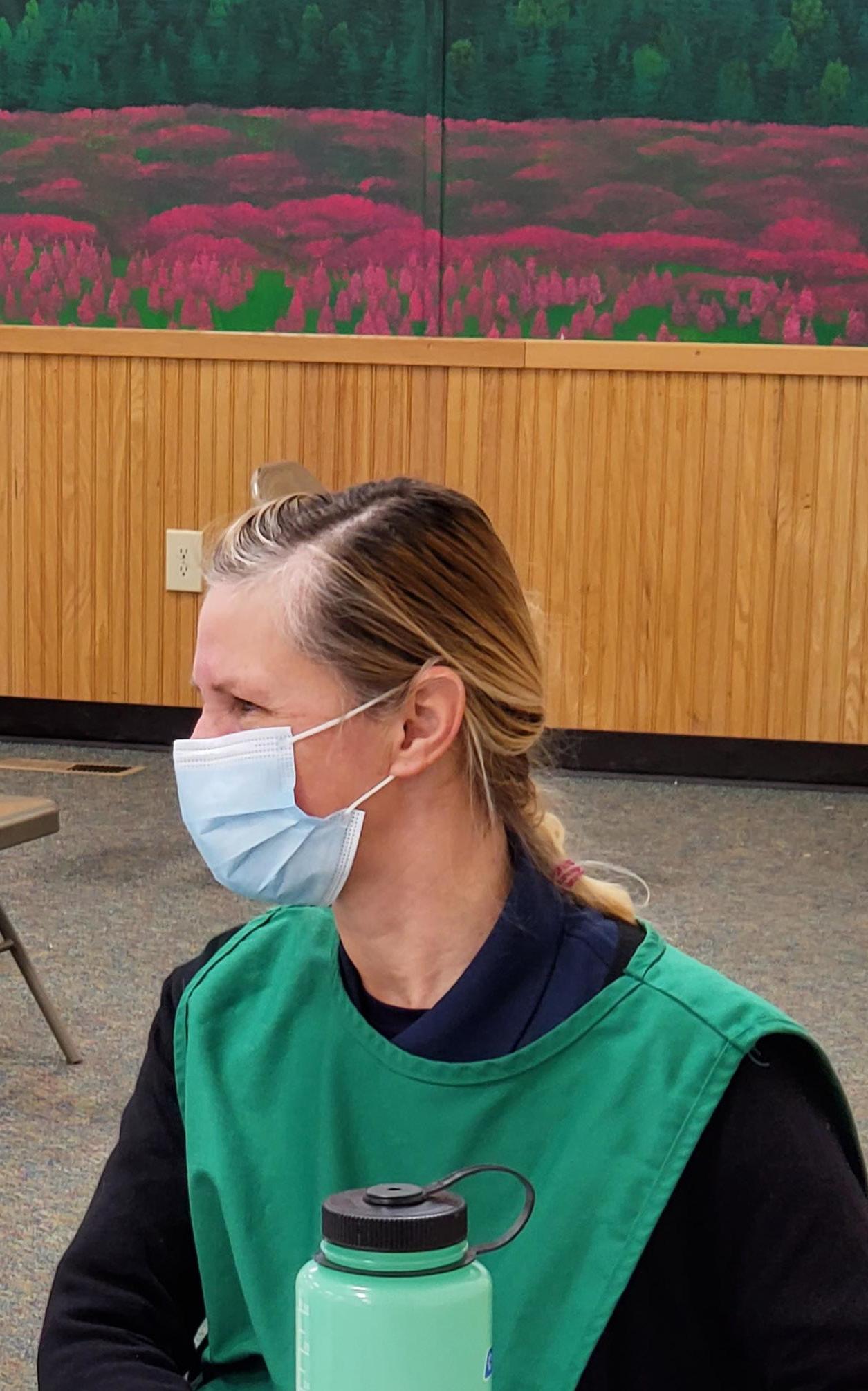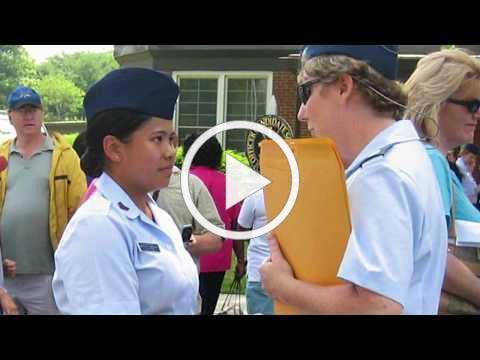
3 minute read
DeltA
The squadron supported two vaccine Point of Dispensaries (PODs) in March, working with Alaska Public Health in Delta Junction, Alaska, to help distribute Covid-19 vaccines to more than 200 community members. Twelve members of the 027 Squadron provided support in greeting, infection control, indoor traffic flow, and information sharing, including several other members from AKWG supporting virtually. Plans are in place for additional CAP involvement in another POD 24 April in Delta Junction.
On a beautiful day for flying, seven cadets received orientation flights, including one for whom it was his first o-ride ever. Thank you, 085 Tok COS pilots!
At the monthly aerospace meeting, several cadets gave presentations regarding their favorite aircrafts and then received instruction on weather implications for aviation. Two visitors were Interior Alaska’s CAP-USAF Liaison SMSgt Tuttle, who provided insight into various aircraft capabilities, based on his extensive experience, and C/A1C Tuttle.
C/1st Lt L Schmidt taught an ES lesson about preparing one’s 24-hour pack.
The squadron’s newest senior member, SM Jan ice Fox, completed Level 1 training.
The 5th Tuesday featured a filtered version of “First Man,” about the race to the moon, focus ing on Neil Armstrong.
Cadets and seniors attended the Eielson 168th Wing Open House for CAP members on 10 April. The full schedule offered an enjoyable and informative event.
Weekly squadron meetings are held on Tuesday nights, from 18302100.



By Laura Emerson with Capt. Brad Kidder
“CSI” is a familiar abbreviation designating a TV crime drama franchise, but for Civil Air Patrol communications operators those letters stand for something entirely different -- “Chicken Soup Initiative,” CAP’s COVID-19 response radio network.
The network is the collaborative brainstorm of 2nd Lt. Michele Bremer, deputy head of National Headquarters communications planning and head of communications recruitment and retention, and Lt. Col. Kristin Freeman, Rocky Mountain Region deputy chief of staff for communications.
The initiative launched April 10, 2020 with 41 stations reporting. We now have 205 unique stations, which produced more than 1724 location- and event-specific SITREPs.
Net controllers represent a range of grade from second lieutenant to major general and hail from 10 wings from Puerto Rico to Alaska: in PR, NH, CT, OH, MS, AR, WI, CO, ID, WA and AK. Their camaraderie and unity was evident – and noticed – in the chatrooms associated with the online 2020 Na-

“The CSI Net management team saw an opportunity in the challenge of COVID-19 to develop a valuable mission tool in the form of pre-formatted messages,” said Malcolm Kyser, senior program manager for command and control communications. “The endeavor has encouraged and trained a whole new group of operators in support of the mission.”
Radio operators even with little or no experience in net operations learn to engage other stations with check-ins, reports, and relays while helping ensure that information makes its way back up the radio chain. Cadets confer with generals as reports travel through the system.

“To avoid OPSEC issues,” Freeman explains, “We send out by email, twice a week, numbered questions with lettered response options, in sets of four to six questions, in both English and Spanish. Each set is called a SITREP and has an alphanumeric designator. The operators give the alphanumeric designator, then give the number of the question, followed by the letter which indicates their response. On air, what is heard would be “R5 1B 2D 3B 4E 5D”.The questions are a mix of both serious and silly questions. We want participation to be both informative and fun.”
“Pre-formatted messages are part of our radio operations future,” Kyser said. “As we stand up a radio-based data system, we will also need SITREPs at the tactical level to feed information into that system. The SITREPs tested by the CSI net are the kinds of messages which will be key to that operational development.”
“Alaska is one of the most remote but strategically important wings in CAP. Two states in CONUS that are next to each other may not be able to speak directly to each other on HF, but a relay through Alaska solves the problem nicely. This has been demonstrated repeatedly on the CSI Activity Net. Alaska Wing’s participation has been vital to the success of the project. Besides, who can question the cool points of being relayed via Alaska?” (2nd Lt. Bremer).







